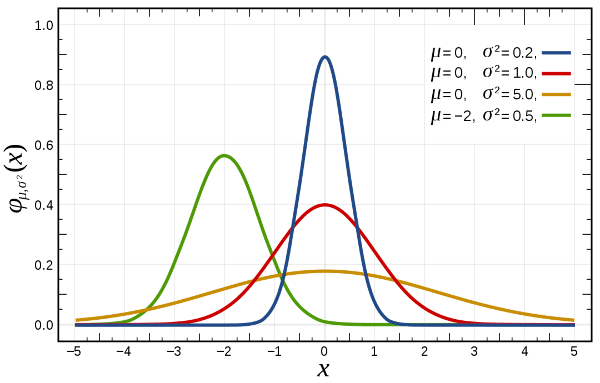Parametric statistics requires a normal population distribution. For a newbie in statistics, what does normal population mean? This article explains the concept using the mouse deer population as an example.
Parametric statistics are those statistics that you use to analyze data that are normally distributed. When we say that data are normally distributed, that means those data were collected without bias or without preference that suits your convenience.
A normally distributed population approximates a symmetrical curve. The shape of the distribution accounts for all possible members of the population under study.

A Hypothetical Population of Mouse Deer
To make the concept of normal distribution clearer, let us look into a hypothetical study of the mouse deer population in Balabac Island, an island south of Palawan in Western Philippines known as a habitat for this endangered mammal. The primary purpose of the study is to find out how big these animals are at maturity. Specifically, you would want to know their total length and the circumference of their body.
You cannot afford to study all of the mouse deer members in Balabac as you have a limited amount of funds available. Hence, you have to get a sample to determine what you want about the mouse deer, specifically their size.
Sampling the Population
To get a good sample of the mouse deer population, you must first determine how the mouse deer population is distributed. You need to know the animal’s habitat to get a better idea of where to get your samples. You want to capture all of the possible variations in size. Hence, you should cover all of the places where mouse deer are known to occur.
The mouse deer are known to congregate near the coastal zone because their food thrives in those areas. Thus, you narrow down your search to those places. Once you are confident that you have identified the animals’ possible habitat, you take a sample.
The sampling areas (the habitat) may be widely distributed in Balabac Island. Some may be near while some may take days to visit. As a researcher, you may be tempted to omit those places which are inaccessible. But you know for a fact that the mouse deer populations thrive in those places based on key informant interviews. Hence, good research practice requires that you include even those remote locations. You want to account for all of the possible sizes of the mouse deer on the island.
Random Sample Approximates Normal Population Distribution
So, what is the point including all the possible populations of the mouse deer?
The idea is that you must give all of the mouse deer’s cluster of populations an equal chance of being selected. Data gathered in this way where all possible population members are accounted for approximates a normal population distribution.
Thus, it is expected that you will get all of the ranges of mouse deer population size to meet the study’s objectives of documenting how small and big the mouse deer could get.
Caveat of Not Including All Possible Populations
Out of convenience, if you opted to study only those that you can easily access, chances are, you will be missing size ranges in remote places. Possibly, accessible mouse deer populations may not exhibit the mammal’s possible maximum size because human disturbance in their habitat may have reduced feeding opportunities. As the mouse deer evades humans, the opportunity to get more food becomes less impacting on their body’s growth. Perhaps this population will be characterized by stunted individuals.
It is also possible that those mouse deer populations near human populations have less mature individuals as they have been hunted for food. Thus, your conclusions, if you only account for those accessible to you, may be wrong. You may just be measuring the younger members of the population.
For data gathered this way, parametric tests will be appropriate as your population assumes a normal distribution. All members of the population are accounted for.
© 2020 September 16 P. A. Regoniel
[cite]


